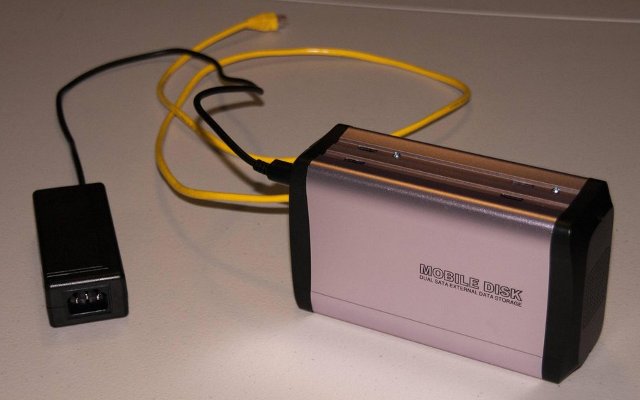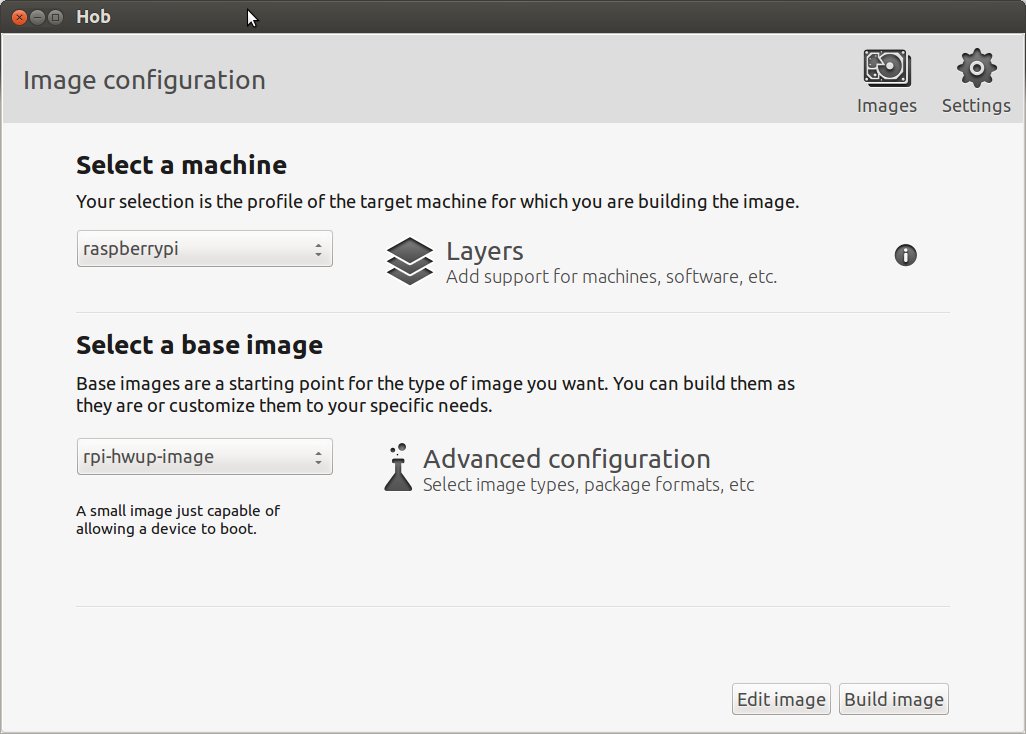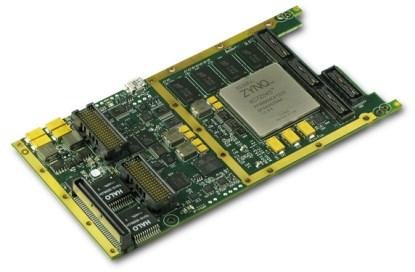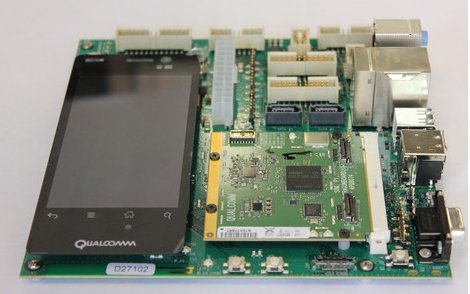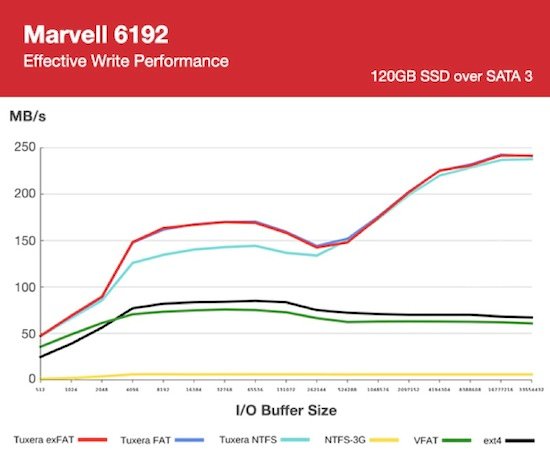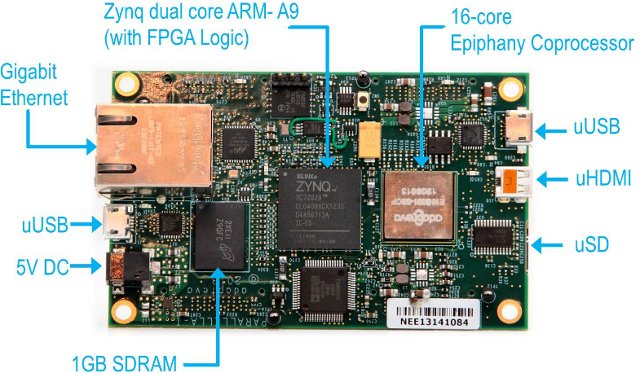The Cubieboard with a 1GHz processor, 1GB RAM, a SATA port and its low price ($49) is probably one the best available options if you want to make your own ARM based NAS. The hardware is easy to get, most of the software components (Linux, SAMBA/NFS server, Bittorrent client, etc…) are available, but there are no NAS enclosure available for the Cubieboard, so this part may be a little tricky. Cubieforums user Vustus has a pretty neat and cost- effective solution for an enclosure based on off-the-shelf parts. If you want to try it yourself, you’ll need the following parts: 3.5″ USB 2.0 aluminum external dual SATA HDD enclosure ($15) – http://www.geeks.com/details.asp?InvtId=ET-3541S 10″ Flat SATA cable ($2.49) – http://www.newegg.com/Product/Product.aspx?Item=N82E16812119365 SATA Y cable for power ($4.99) – http://www.newegg.com/Product/Product.aspx?Item=N82E16812198015 Power cable for th Cubieboard (taken from PSP power supply, as a cable would cost about $7 according to vustus) ($4.29) – http://www.amazon.com/gp/product/B002TK3GH8 […]
Cloud Media FreeOTT Player Review
Syabas was a company designing set-top boxes such as Popcorn Hour Media Tank that were relatively popular before the Android media player invasion. The company is now called Cloud Media, and they offer a tiny media player called FreeOTT that connects to their Apps Market and bring online video, Internet radio, social media and other streaming media to your television. The device is free (as in free beer), as it’s not actually available for sale to the general public, and the only ways to get it is to have your ISP or telecom provider set it to you, or win one from the regular giveaways organized by the company. I won one via a giveaway announced on their Facebook page, and I had just to pay $5 (via Paypal) for shipping. The company does not provide detailed specifications for their device but we do know it’s a Linux based media […]
12MB Minimal Image for Raspberry Pi using the Yocto Project
Last year, I wrote instructions and provided a download link about a minimal image for Raspberry Pi based on Raspbian. The compressed image is 84MB, and the good thing about it is that you can just use apt-get to install packages. The problem is that it’s not actually that small as once it is uncompressed the rootfs is still a massive 414 MB. So today, I’ll explain how to create a smaller (and custom) image using the Yocto Project, a platform that let you build an embedded Linux distribution matching exactly your project’s requirements. Other advantages are that the build is configurable with config files, so it’s easily reproducible with a few command lines, and it might turn out to be useful to learn more about the Yocto Project as many boards and SoC are now making use of the framework, including Freescale i.MX6 (Wandboard, Olinuxino-imx233, Sabrelite, etc…), the Beagleboard, […]
Alpha Data ADM-XRC-7Z1 XMC Mezzanine Card Powered by Xilinx Zynq SoC
Alpha Data, a company providing solutions for compute intensive applications, has announced the ADM-XRC-7Z1, an XMC board powered by Xilinx Zynq-7045 or Zynq-7100 Cortex A9 + FPGA SoC targeting application such as software-defined radio, radar and sonar processing, image processing and machine vision. If you are like me, and have never heard about XMC mezzanine cards before, here’s what Wikipedia has to say about it: XMC, or Switched Mezzanine Card, is a PCI Mezzazine Card (PMC) with high-speed serial fabric interconnect defined by the VITA 42 standard. XMC specifies a 5th connector (“P15”) that supports PCI Express (VITA 42.3) or other high speed serial formats such as Serial RapidIO (VITA 42.2) and Parallel RapidIO (VITA 42.1). VITA (VMEbus International Trade Association) is an organization developing and promoting open technology standards that you can download for a fee. Here are the specifications of the board: SoC – Xilinx Zynq-7045 or Zynq-7100 dual […]
Intrinsyc Announces DragonBoard 8074 Devkit Based on Qualcomm Snapdragon 800 APQ8074 Processor
Intrinsyc Software has announced the availability of a new DragonBoard Development Kit composed of a Qseven Open-Q 8074 SoM powered by Qualcomm Snapdragon 800 APQ8074 processor for Android and embedded Linux development, and a mini-ITX carrier board. The kit is designed to help with developing applications such as ruggedized tablets, digital signage, applications for government/public safety, health care, robotics, wearable displays and video streaming/conferencing. Specifications of DragonBoard 8074 Kit: SoC – Qualcomm Snapdragon 800 (APQ8074) quad core Krait 400 CPU @ 2.3 GHz with Adreno 330 GPU and Hexagon v5 QDSP6 @ 600MHz System Memory – 2GB LPDDR3 RAM Storage – 16GB eMMC flash + micro SD slot + 2x SATA Display – qHD LCD capacitive touchscreen Connectivity: Gigabit Ethernet Wi-Fi 802.11n/ac Bluetooth 4.0 GNSS (GPS and GLONASS) Other I/O: USB – 2x USB 3.0 + 2x USB 2.0 + micro-AB USB OTG Video Output – HDMI Audio – 5.1 […]
Linux Kernel 3.10 Released
Linus Torvalds has announced the release of Linux Kernel 3.10: So I delayed this by a day, considering whether to do another -rc, but decided that there wasn’t enough upside. Sure, it hasn’t been as quiet as I’d like, and we had this long discussion about an inode list locking scalability issue over the last week or two, but in the end that issue turned out to not be new, and while we may end up back-porting the eventual resolution to 3.10, it wasn’t a reason to delay the release. Similarly, while I might wish for fewer pull requests during the late rc’s (and particularly the ones that came in Friday evening -inconvenient for a weekend release), at some point delaying things doesn’t really help things, and just makes the pent up demand for the next merge window worse. In other words, I could really have gone either way, but […]
Tuxera FAT Embedded Boasts Faster and Better FAT32 Implementation for Embedded Linux and Android
Tuxera has announced their “FAT Embedded” implementation of the FAT file system specifically optimized for embedded Linux and Android. The company claims their commercial solution delivers much faster data transfers than competing FAT implementations. Beside providing better performance, it also includes features such as fail-safe operation, and lower power consumption. They’ve benchmarked different file systems including Tuxera FAT Embedded with different I/O buffer sizes on two embedded hardware: Marvell 6192 @ 800 MHz with 512 MB RAM and a 120 GB Corsair Force GT SSD (SATA 3) The write speed of Tuxera exFAT and FAT appears to clearly outperform even ext-4 in this particular system. As a side note, I also evaluated 2 embedded systems based on the same low-end CPU: one using NTFS-3G, and the other Tuxera NTFS back in 2010, and there’s was a massive performance difference at the time. NTFS-3G is a different beast as it uses […]
$99 Parallella Supercomputer is Now Open Source Hardware
Parallella is a low cost supercomputer designed by Adapteva using Xilinx Zynq-7010/7020 FPGA+2x Cortex A9 SoC combined with Adapteva Ephipany 16 or 64 cores epiphany coprocessor. The project had a successful kickstarter campaign which allowed then to provide the 16-core version for $99, and the 64-core version for $750. The board will soon be shipped to people who pledged on kickstarter, and one of the promise of the campaign was to fully open source the platform, and today, they just fulfilled that. Before going into the details of the open source release, let’s have a look at the specs: SoC – Xilinx Zynq7000 Series (Z-7010 or Z-7020) Dual-Core ARM Cortex A9 with 512KB L2 Shared Cache Coprocessor – Epiphany Multicore Coprocessor. The Parallella-16 board includes the 16-core Epiphany-III processor The Parallella-64 board includes the 64-core Epiphany-IV processor System Memory – 1024MB DDR3L Boot Flash – 128 Mb QSPI Flash Indicators […]


